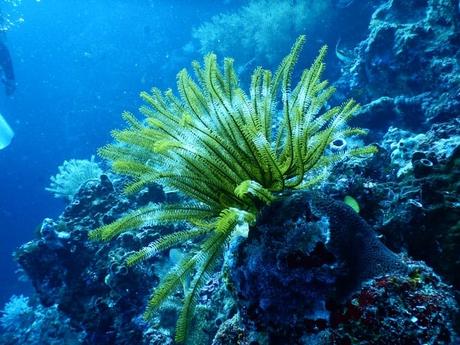There is warning from the marine park authority that freshwater coral bleaching could occur this year as Queensland’s overflowing rivers pouring flood waters into the Great Barrier Reef.
On Monday, Marine Park Authority of the Great Barrier Reef told Senate estimates hearings in Canberra that after bleaching disaster in 2016/2017, there is a chance that corals might get damaged again by the floods in the Queensland.

According to the acting chief executive of the authority, Bruce Elliot, after monitoring flood plumes on the reef, scientists found freshwater bleaching could affect inshore reefs.
The animals like dugongs and turtles are at risk due to flooding. The discharge of flood waters from rivers into the reef could kill seagrass meadows which is the primary food source of these animals.
Earlier cyclone Yasi in 2011 also caused the death of animals after the disaster.
“This event has not been without its ramifications for the Great Barrier Reef,” Elliot said.
“There has been major to moderate flooding of the rivers from the Daintree to the Mackay regions.”
The authorities would get the full picture of how natural disaster’s affected the marine park only after weeks or months.
At the hearing, David Wachenfeld, the authority’s chief scientist said, “extensive” flood plumes found on the reef, were carried to further east and offshore for unusual wind conditions than what expected in common situation.
He said Scientists from James Cook University and the Australian Institute of Marine Science monitored the chemical content and the spatial extent of the plumes.
Scientists detected that the water salinity in some areas on the reef had dropped to almost half than its normal level due to flooding, said Wachenfeld.
The corals and other marine life which are used to a saline environment are under stress and can result in freshwater bleaching of corals.
According to Wachenfeld, flood waters affected a substantial part of the central Great Barrier Reef.
“I’m certainly not able to put any kind of a figure on the spatial extent of the park that’s affected by the flood plumes but I think I can safely say that they are extensive because there are rivers flooding all the way from the Whitsundays in the central Great Barrier Reef, right up to Cape Tribulation in the northern Great Barrier Reef,” Wachenfeld explained.
This year the chance of mass thermal bleaching had “markedly” reduced due to the region’s recent cooler weather in comparison to earlier predictions, Elliot told the hearing.
The predictions in coming months would be critical to determine the outcome for the reef this season, he added.
The environment department officials were asked on the activities of the environment minister, Melissa Price in hearings previously in the day. Price was questioned for her lack of public appearances during the flooding and other natural disasters including the record-breaking January heat this summer, and the Tasmanian bushfires.
Labor and Greens senators enquired officials about the public comment the minister made on the disasters, also the meetings she had with groups including the Wilderness Society, stating Price failed to respond to correspondence requesting a meeting.
Officials confirmed that the Bureau of Meteorology had briefed the minister on the floods but whether she had made any public comment on the mass killing of fish in Menindee Lakes, is questionable.
“Surely you can answer that,” Greens senator Sarah Hanson-Young said to the department.
“A minister’s output and their contribution is not measured by their interviews,” said, Liberal senator Simon Birmingham.

